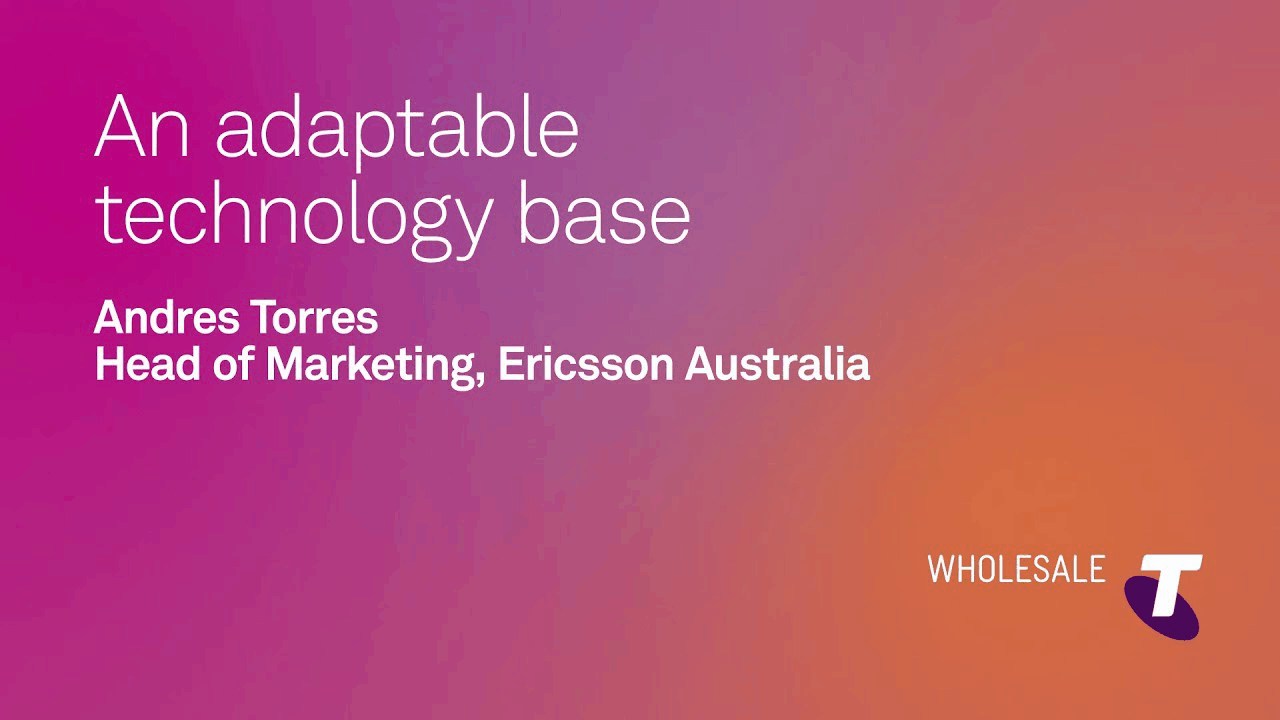Ericsson on the key technology trends driving innovation

Mobile technology is at an inflection point, with innovations in network capabilities, services and applications emerging to create a range of new opportunities. Australia is leading the way in mobile networking globally, making it easier for firms here to take advantage of new technologies. In order to help you seize these opportunities, our partner Ericsson has identified five key trends in the mobile industry to monitor over the next few years.
1. An adaptable technology base
An adaptable technology base is the enabler for the entire technology stack ranging from advanced system components to feature development. To release the full potential of the digital economy, the underlying technology components will rely on a symbiotic evolution in the software and hardware dimension and it will be precisely at the intersection between software and hardware where more powerful and flexible solutions will become available, enabled by virtualization technologies and horizontal architectures.
When we look at the evolution of cellular networks, breakthroughs that we see being implemented today such as network slicing and beamforming are precisely the result of a harmonised balance between software and hardware that are enabling our industry to deliver better and more comprehensive services to end-users.
2. An extended distributed IoT platform
There are over 17 billion connected devices in the world, including 7.5 billion mobile phones and today, about 90 per cent of phones sold are smartphones. The proportion of mobile phones and connected devices will change dramatically in the next couple of years with over 30 billion connected devices predicted by 2023 as mobility, the Internet of Things (IoT) and cloud capabilities change the way we’re interacting with technology. Much more of our technology use will take place in the background, without us having to do anything, as machine learning and machine-to-machine communication help to reduce the friction of everyday tasks.
This new paradigm will create fertile ground for innovative approaches to solving consumer and business problems. We have already seen major disruption and new business models emerge in industries such as retail, travel, education and transport. Yet realising the full potential requires a new generation of mobile networks – 5G networks – that are faster and have higher capacity than ever before.
3. The dawn of true machine intelligence
The processing power of machines has significantly evolved in the last five years. Machines have greater learning capabilities. We’re no longer using theoretical rules to teach computers, but feeding them reams of real data, reducing the incidences of error. In fact, we are approaching the time when we might not need to teach computers at all.
Research from Ericsson found that there are advantages and disadvantages to the emergence of artificial intelligence (AI). Although changes to the current structure of the job market are inevitable, it creates an opportunity to up-skill current employees. The report found that although 50 per cent of respondents are concerned that AI robots will soon take jobs, 35 per cent would want an AI adviser at work and 25 per cent would like an AI as a manager.
The report also found that one in four pedestrians would feel safer crossing a street if all cars were autonomous, and 65 per cent of respondents would prefer to have an autonomous car.
4. End-to-end security and identity management for IoT
The Internet of Things is growing rapidly, and the impact on networks will be significant as Ericsson expects to see about 20 billion IoT devices worldwide by 2023. There are two key classes of IoT, both requiring a safe and secure network:
• Massive IoT - connecting many devices with low requirements in speeds and latency such as smart meters
• Critical IoT – connecting devices with high demands that might require a reliable low latency network, such as self-driving cars or remote surgeries
Most devices will be connected by cellular networks, which raises some concerns over privacy and security. The majority of people are willing to give up some degree of privacy in the interest of technology enablement, but the line is blurry, and differs from person-to-person. The Ericsson report found that 40 per cent of people believed devices must be encrypted, while 50 per cent would like to have just ‘reasonably good’ privacy.
As security and privacy become ever more important as competitive differentiators, those businesses that can offer reassurance and build a reputation on security credentials can expect to win and keep customers.
5. Overlaying reality with knowledge
Humans are visual creatures and immersive communication has proven to be an effective learning method by tying the user to the experience. We’re going to see Virtual Reality (VR) move outside of video games and into industries such as education, security and architecture.
In the near future, VR will be used to edit the viewer’s immediate reality – from changing the colour of flowers in a garden bed as they walk past, to editing the clothes people wear. Ericsson found that four out of five VR users believe this technology will be indistinguishable from reality in as little as three years.
It is a striking finding, and one that a few years ago wouldn’t have been out of place in a science fiction film. Yet it shows how fast technology is moving ahead. Business success means keeping up with these trends and finding ways to adapt your business to this new reality.
